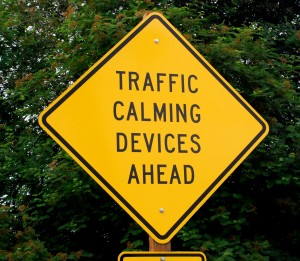This week I’m delighted to feature HBG Senior Researcher Jennifer Turner as guest blogger. I’ve always admired Jen’s ability to be organized and calm in the midst of a flurry of activity. Here she shares some of the secrets she’s discovered…
Ping! Another email. Pong! An instant message from a coworker asking for advice on evaluating hedge fund compensation. Bzzz. The sound of a new text message. Your 2:00 meeting is running behind and you’ll be late for your 3:30 meeting.
Sound familiar? Given all of these distractions, it’s amazing we ever get anything accomplished in a typical work day. Add to that the endless amount of information that is readily available with just a few taps on the keyboard, and we may find ourselves thinking our projects are never going to feel complete.
As a home-office based worker, I am certainly grateful for the vast amount of resources available on the internet that allow me to work from anywhere and still be available for school pick-ups. I also love that I can verify that final piece of information of an almost-complete profile after the kids have gone to bed from the comfort of my home office. I find myself struggling, sometimes, to maintain some sort of control.
We’re all constantly threatened by the numerous distractions we are regularly faced with as a result of modern technology. But there are solutions available!
HOW TO MANAGE – CREATING CALM
Tony Crabbe offers suggestions on how we can take back control of our lives in a world of “too much” in his book How to Thrive in a World of Too Much Busy (Piatkus, 2014). His advice:
- Tackle the hardest tasks first, when you are freshest. Set aside the first 30 to 60 minutes of your work day for this task. If possible, do so even before opening your email. If this isn’t possible, then at least turn off your email notifier while you are working on the task.
- Minimize multi-tasking. Do one thing at a time (when possible), and do so in bigger chunks of time. Constantly switching back and forth between projects makes us less effective, thereby decreasing productivity. It takes time to “gear up” every time a task is revisited. Work on the task in an allotted chunk of time rather than in spurts.
- Refresh your attention. When you feel yourself start to lose momentum choose easier tasks (such as responding to those emails you had been avoiding earlier in the day). Or select a part of the task that is better suited for your mood and continue to make some sort of progress.
- Give your mind some down time. We are constantly surrounded by stimulation devices, but if we are always “tuning in” to these devices, we are not giving our minds time to digest and actually learn the new information. Give your brain a break from stimulation. Allow it to reflect and turn new information into your own insight. Some of your most creative ideas may to start take shape.
- Use tools specifically designed to help you manage time. For example, check out rescuetime.com, a web-based time management and analytics tool that allows users to track how they spend their time on the computer. See for yourself how you spend your time and create goals to help you improve the time you spend on the more productive tasks.
No matter how hard you try to follow these suggestions, there are still going to be times when you feel like you just can’t handle one more task. Maybe next week’s meeting with a prospect has been moved to tomorrow, and the development officer needs the profile by the end of the day today. Or an unexpected gift from a new prospect demands immediate attention in order for the gift to be properly acknowledged. Or (as happened at HBG all last week!!), your favorite resource has technical issues and is unavailable at random and (of course) critically important times.
When faced with these challenges, remain positive.
Walt Disney, the consummate optimist, believed that by taking chances people could accomplish seemingly impossible tasks. But those tasks would never get done if people didn’t BELIEVE it was possible. Lots of people have reasons for not starting a project or for not giving a task the attention it (or the client) is owed. Instead, they make excuses and produce a stockpile of reasons why it can’t be done.
It’s easy to respond to tough challenges with “No, because…”
But what if you try “Yes, if…”?
Harrison “Buzz” Price, a research economist who worked with Disney, recommends that busy people use the response “Yes, if…” to further demands on their time.
In his book Walt’s Revolution! By the Numbers (Ripley Entertainment, Inc., 2003), Price describes the “Yes, if…” method as “the language of an enabler.” While “No, because…” and “Yes, if…” responses both acknowledge difficulty in squeezing in a new task, “Yes, if…” points to what needs to be done to make the request possible.
“Yes, if…” is the approach of a deal maker. It highlights solutions rather than emphasizing the problem, allowing you to get what you need in order to make the deal possible. It makes you a smart negotiator and a solution finder – a successful combination.
Give “Yes, if…” a try. Be an advocate for yourself and take control of the situation by saying what you need for success.
And now that you have that new task ahead of you, don’t forget to silence your cell phone. Turn off your email notifier. Let voice mail answer your desk phone. Take a deep breath. Create a space of calm within the storm.
You’ll do your best work.

